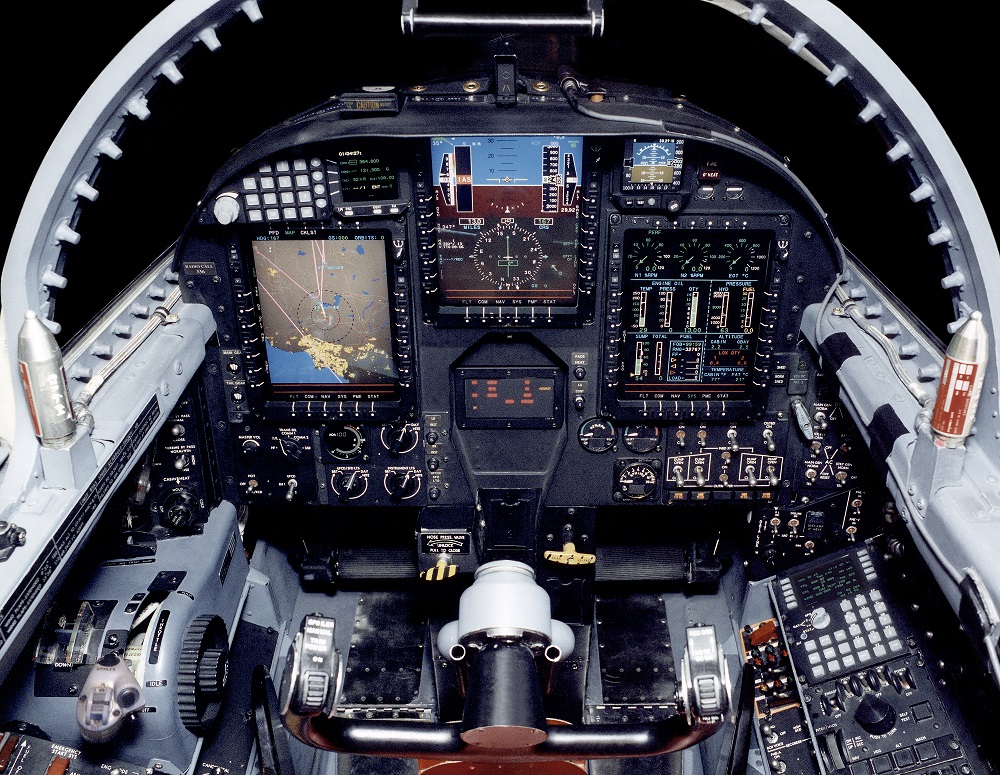Avionics Upgrade for U-2S to Feature Open Mission
Systems

U-2S cockpit upgraded under the Reconnaissance
Aircraft Maintainability Program (RAMP) (Photo Courtesy of Lockheed Martin)
Lockheed Martin [LMT] recently received a $50
million Air Force contract for the Avionics Tech Refresh (ATR) program for the
service’s fleet of 31 U-2S Dragon Lady reconnaissance planes–upgrades that will
feature the first fleet-wide Open Mission Systems (OMS) fielding for the Air
Force, the company said.
Lockheed Martin Skunk Works in Palmdale,
Calif., is to modify the aircraft.
“The recent ATR contract covers the
design, integration and test of the new components on one U-2 aircraft to pave
the way for full fleet modification in the future,” Irene Helley, Lockheed
Martin’s U-2 program director, wrote in an email to sister publication Avionics
International. “Integration and test of the first U-2 will be
complete in 2022 followed by fleet modification. All 31 aircraft will
receive the ATR upgrade–27 single-seat aircraft and 4 two-seat aircraft.”
Lockheed Martin is finalizing the ATR
subcontracts for the updated avionics suite, new cockpit displays, and a new
mission computer designed to OMS standards that will move the U-2 toward the
Air Force’s Advanced Battle Management System (ABMS) approach to link sensors
from a variety of platforms. Due to COVID-19, the Air Force has postponed a
second round of tests for ABMS scheduled for this month to June.
“The future fight is all about data –
getting the right information to the right person at the right time,” Helley
wrote in her email. “Future systems must rapidly collect, process and share
data across integrated networks that include legacy and 5th generation
platforms; use machine to machine processing to dramatically reduce the data to
decision timeline; and communicate securely and simultaneously at all tactical,
operational and strategic levels across multiple domains.”
“Open Mission Systems enable this future
with affordable, swift integration of new capabilities onto the U-2,” she
wrote. “OMS also allows for the collection of both air vehicle and mission
system performance data to support planned maintenance instead of disruptive,
unscheduled maintenance – minimizing maintenance down time for the fleet. For
capability demonstrations, we have used the Lockheed Martin developed OMS
solution known as the Enterprise Mission Computer version 2 (EMC2) that makes
the U-2 OMS enabled. The EMC2 will be part of the ATR upgrades.”
ATR follows the Reconnaissance Avionics Maintainability Program (RAMP) for the U-ATR follows the Reconnaissance Avionics Maintainability Program (RAMP) for the U-2. Lockheed Martin received a $93 million Air Force contract for RAMP in October 1998 and delivered the upgraded planes between 2002 and 2008. Those upgrades replaced the 1960s steam gauges with graphic displays, including three 6 by 8 inch multi-function displays by L3Harris [LHX], an up-front control panel and display by Honeywell [HON] and Ontic, a warning and caution annunciator by Korry Electronics and Esterline [TDG], and a stand-by flight display by Meggitt PLC [MEGGF].
The RAMP upgrades also have an avionics processor by Lockheed Martin’s Owego, N.Y., operation and a VxWorks operating system by Wind River [WIND].
“The new displays under the ATR will be higher resolution and provide essential ISR information, as well as an overview of the battlespace, presented in real time to the pilot,” Helley wrote in her email. “The raw data is collected then analyzed and the most relevant data is displayed. Flexible autonomy is an option for the pilot, providing them an opportunity to focus on strategic decision making and other tasks as desired. The data and information, as well as the flexible autonomy, enables pilots to make more informed and faster decisions, freeing time spent on mundane tasks for more strategic efforts.’
According to Helley, “a key discriminator will be the implementation of a Next-Gen hand control that will maximize human factors to allow pilots to easily enter data in selectable fields, thereby, greatly increasing pilot efficiency.”
“The hand control will also provide pilots the ability to enable tipping and queuing, a key discriminator for gathering and sharing intelligence,” she wrote in her email.



Ingen kommentarer:
Legg inn en kommentar
Merk: Bare medlemmer av denne bloggen kan legge inn en kommentar.